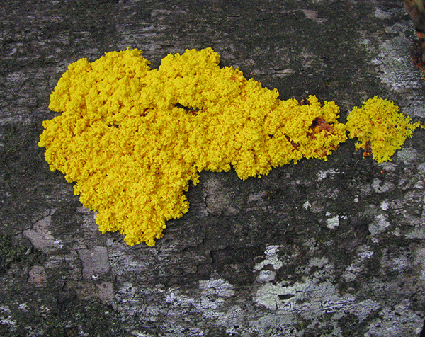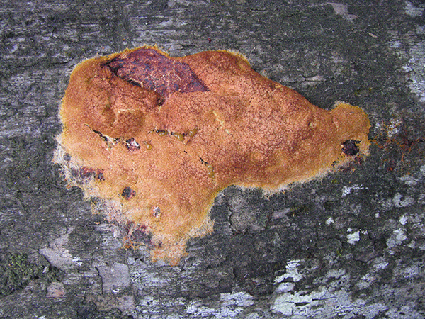Mould with itchy feet
Often, when people find out I’m interested in fungi, they’ll ask me to identify something weird, disgusting or horrible in their garden. If the thing in question is also described as looking like scrambled eggs or something the dog threw up, and that it seems to be moving around the yard, then I can be pretty certain we’re talking about a slime mould. A common one (Fuligo septica) is actually known by the common name ‘dog vomit slime mould’. Charming!
So what are they doing there and are they harmful? Slime moulds (or molds) – also known as myxomycetes – feed on the microorganisms that break down dead plant material, releasing nutrients into the soil for use by live plants and other organisms. They’re a bit like fungi in that way, but fungi don’t usually move! So really, they are good guys. The mass we see is actually a collection of many single-celled organisms that get together when food is scarce to forage as a great big multi-celled being. They can move 2 – 3 centimetres a day.
The next stage in the slime mould’s development sees it drying out, hardening a bit and turning brown. If all goes well for the slime mould, it will have reached a high, well-lit spot (this is true!) like on top of a log, taken in the view and morphed into what looks like hundreds of hairs topped by brown velvet. This is the spore distribution stage and by positioning itself in a higher spot, the slime mould maximises the spread of its spores.
Imagine my delight the other morning when I spotted a bright yellow patch on a fallen log in our yard – slime mould! The weather here has been dry, so the yellow ‘scrambled egg’ stage only lasted a day before crusting over, turning brown, oozing and looking like something off Dr Who (it was slime moulds that inspired the movie ‘The Blob’).
So, the next time you spot an alien being in your garden, don’t be worried, be fascinated!
Tags: fungi
Posted in Organic Gardening





I love love LOVE fungi and can appreciate even moving slimy moulds that appear to have recently been part of a canine stomach. Cheers for this great post 🙂
fascinating, what a wondrous source of information you are for the curious gardener
Why, thankyou!
I plank for ‘aliens’
Slime moulds could be a bit tricky to plank, I reckon!